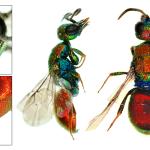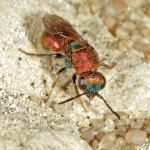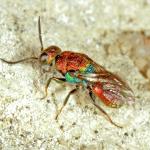Identification keys and general biology are given in Morgan (1984), Gauld & Bolton (1988), Kunz (1989) and Falk (1991).
Dorset, Hampshire, Surrey, Berkshire, Essex and London. Morgan (1984) also gives Devon, Isle of Wight and Lancashire, but detailed records for these counties have not been found.
Found in many parts of Europe (Sweden, Finland, The Netherlands, Belgium, France, Spain, Portugal, Germany, Switzerland, Italy, Poland, former Czechoslovakia, Austria, Hungary) and north Africa (Tunisia).
Listed as Rare (RDB3) in Shirt (1987) and Falk (1991).
Found in open, sunny, sandy habitats. Associated with the nesting habitat of its host.
Based on the few records available, flies from June until August, with July being the most likely month when adults can be found. On mainland Europe found from May until September.
Cinquefoil, smooth hawk's-beard, hogweed, sheep's-bit, stitchwort, thrift and yarrow.
2001




